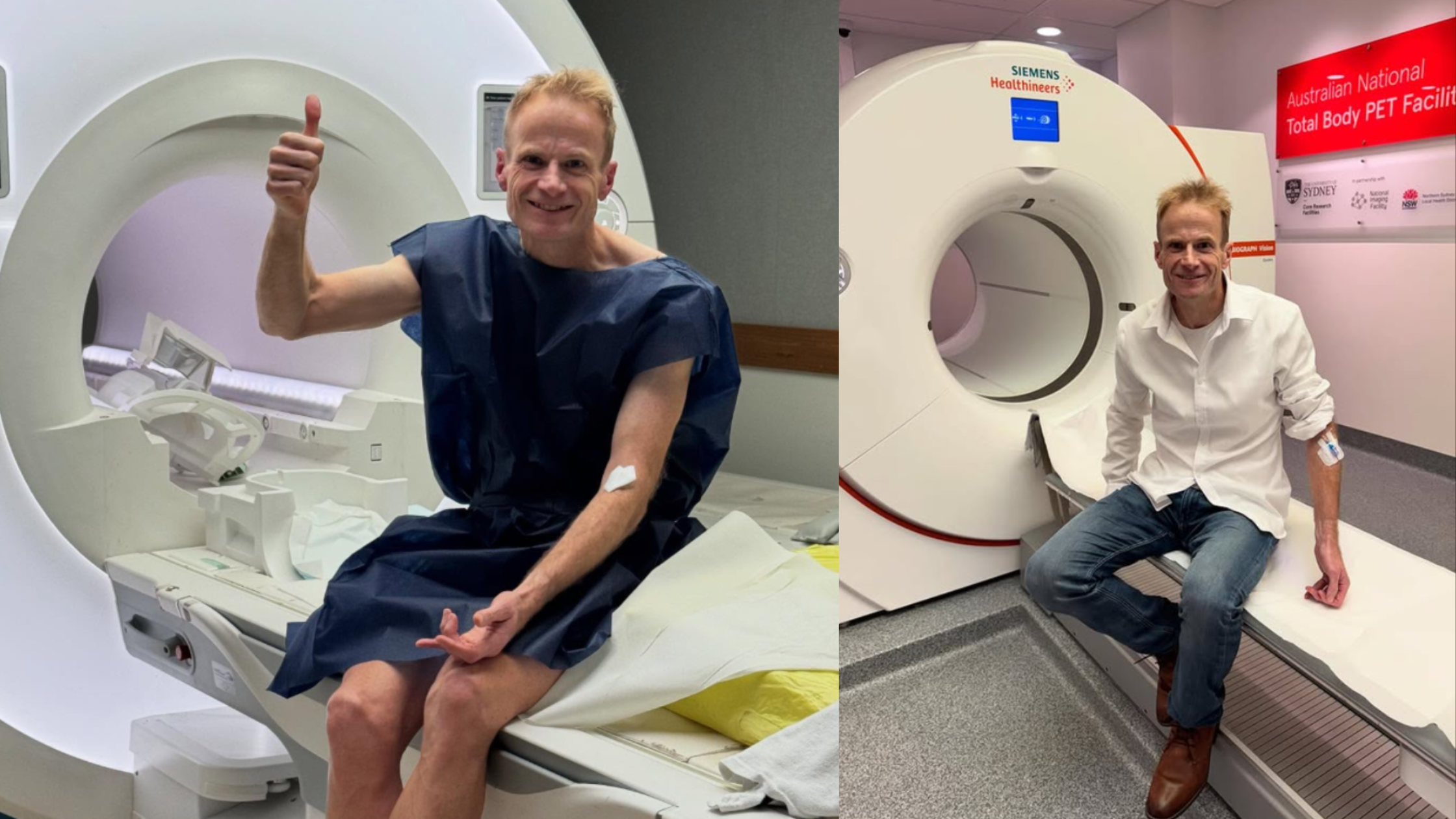Doctor Remains Brain Cancer Free a Year After Using His Own Pioneering Treatment

When life threw an unexpected curve at Professor Richard Scolyer, a renowned pathologist and a global authority on melanoma, his response was nothing short of extraordinary. In the prime of his life, engaged in groundbreaking research and elite sports, Scolyer faced a dire diagnosis that threatened to cut his vibrant journey short. But instead of succumbing to despair, he chose to confront his grim prognosis with a pioneering spirit, turning his personal battle into a scientific quest. This is the story of how one man’s audacious decision to use experimental treatment on himself could potentially revolutionize the future of cancer therapy, blurring the lines between patient and innovator.
A Life-Altering Moment: When a Doctor Becomes the Patient
In May 2023, amidst a routine business trip to Poland, Professor Richard Scolyer’s life took an unexpected and dramatic turn. One moment he was a distinguished athlete and a top medical professional, and the next, he found himself on the floor of his hotel room, gripped by a sudden and severe grand mal seizure. The urgency of the situation propelled him to seek immediate medical attention, leading to an MRI scan at a local university hospital.
The results were a stark contrast to the vitality Scolyer embodied. A mass was discovered in his temporal lobe, a finding that he, with his extensive medical expertise, knew spelled trouble. His professional experience in diagnosing cancer in others now took a personal twist—most signs pointed to high-grade glioblastoma, a form of brain cancer known for its aggressive nature and poor prognosis.
The implications were devastating. Glioblastoma is notorious not only for its lethality but also for the speed with which it acts, leaving patients and families little time to react. Scolyer was confronted with a reality where the months ahead promised a grim battle, laden with potential suffering and an inevitable decline. This diagnosis was not just a medical verdict but a profound life-altering moment, one that brought him face to face with his mortality and the fragility of human life.
As he processed this information, the emotional weight of the situation began to sink in. It was a poignant juncture, where the doctor became the patient, and the professional distance he maintained from his work dissolved into the personal agony of a dire prognosis. This was the beginning of Scolyer’s journey into uncharted waters, navigating the dual roles of a medical pioneer and a patient in his fight against one of the most formidable enemies within the human body.
Betting on Experimental Science to Defy Fate
View this post on Instagram
A post shared by Prof Richard Scolyer AO – My Uncertain Path (@profrscolyer)
Professor Richard Scolyer known for his pioneering work in melanoma research, he saw an opportunity to apply groundbreaking methods from one realm of oncology to another, far more personal battle. This decision marked a pivotal moment not just in his life but potentially in the field of cancer treatment.
Scolyer’s approach was radical: he proposed using immunotherapy drugs—typically used in treating melanoma—on his glioblastoma. These drugs work by enhancing the body’s immune system to recognize and destroy cancer cells. His hypothesis was based on recent advancements in melanoma treatment that had dramatically improved patient survival rates. The question was: could the same principles apply to brain cancer, a field where progress had been painfully slow?
With the support of his colleague and co-medical director at the Melanoma Institute Australia, Professor Georgina Long, they devised an experimental protocol. This protocol involved a combination of three different immunotherapy drugs administered intravenously. This course of treatment was to be initiated before attempting any surgical removal of the tumor—a method contrary to the conventional sequence of surgery followed by adjuvant therapy.
This innovative approach was fraught with risks. The aggressive nature of glioblastoma and its intricate positioning within the brain meant that any new treatment could lead to unforeseen complications, including potentially lethal swelling or rapid progression of the disease. Moreover, the lack of precedent for such treatment in glioblastoma patients added an additional layer of uncertainty. However, the potential rewards, albeit slim, presented a glimmer of hope not just for Scolyer but for future patients facing similar bleak diagnoses.
Fighting Cancer with Unconventional Tactics
View this post on Instagram
A post shared by Prof Richard Scolyer AO – My Uncertain Path (@profrscolyer)
Professor Richard Scolyer’s treatment journey was a pioneering experiment marked by both hope and hardship. The regimen began with a series of immunotherapy infusions, a treatment modality that was experimental for glioblastoma but had shown promise in melanoma cases. The decision to delay traditional surgical intervention in favor of immunotherapy was based on the potential for the immune system to begin attacking the cancer cells before any physical removal of the tumor.
The initial phase of the treatment involved multiple, intensive sessions of intravenous drugs designed to prime his immune system against the tumor. The first infusion took place just fifteen days after his seizure, a rapid commencement that underscored the urgency of his situation. Each session lasted four hours, a grueling process for Scolyer, who faced significant side effects, including high fevers, skin rashes, and elevated liver enzymes. These reactions were indicative of his body’s intense battle against the cancer.
Despite these challenges, Scolyer remained committed to maintaining his physical health to the best of his ability. Between treatment sessions, he continued to engage in cycling and running, activities that had been integral to his identity both as an endurance athlete and a figure of vibrant health. This physical activity not only helped him manage the side effects of the treatment but also served as a psychological boost during his most vulnerable moments.
Approximately a month after the first infusion, Scolyer underwent a crucial surgery to remove portions of the tumor. The operation, performed by craniotomy neurosurgeon Dr. Brindha Shivalingam, was highly emotional due to the personal connections and the high stakes involved. Post-surgery pathology reports provided the first glimpses of hope: his immune cells appeared activated, suggesting that the immunotherapy might be having the intended effect on the tumor cells.
Throughout this period, Scolyer experienced a rollercoaster of emotions. The ups and downs of the treatment, often referred to as “scanxiety”—anxiety between scans to check on the tumor’s status—were taxing. Each MRI scan brought a mix of dread and hope, as any sign of tumor growth could mean a rapid decline in his condition.
One Year Without Cancer—But What’s Next?
View this post on Instagram
A post shared by Prof Richard Scolyer AO – My Uncertain Path (@profrscolyer)
A year into Professor Richard Scolyer’s groundbreaking journey, the results have been cautiously optimistic. Following his experimental treatment, regular MRI scans have shown no recurrence of the glioblastoma, a significant milestone given the typically aggressive nature of the disease. This outcome has not only extended Scolyer’s life beyond initial expectations but has also sparked a wave of excitement and possibility within the medical community.
The absence of tumor recurrence up to this point is particularly remarkable, considering the aggressive subtype of glioblastoma with which Scolyer was diagnosed. Typically, patients with this type of cancer have survival times measured in months rather than years, making his current cancer-free status a source of hope and a case study for potential future treatments.
However, the journey is far from over. The long-term efficacy of the treatment remains uncertain, and the medical team, including Scolyer himself, remains vigilant. The next steps involve continued monitoring through scans and health assessments to detect any changes that might suggest a return of the cancer. Additionally, the decision by Professor Georgina Long and the treatment team to halt the immunotherapy after nine infusions reflects a strategic approach to manage potential side effects and to study the impacts of the treatment over a longer period without further intervention.
The scientific insights gained from Scolyer’s case are already contributing to a broader understanding of glioblastoma and the potential applications of immunotherapy in treating it. The data collected has led to the development of several scientific papers and presentations, aiming to share findings with the global oncology community. These contributions are crucial as they lay the groundwork for formal clinical trials, which could one day lead to established new treatment protocols for glioblastoma.
For Scolyer, the treatment has not only been about prolonging life but also about improving the quality of life during this extended period. He has been able to spend valuable time with his family and continue some of his professional activities, albeit in a limited capacity. The emotional and psychological impact of this journey has been profound, reshaping his perspectives on life, work, and family.
One Man’s Experiment That Could Change Everything
As Professor Richard Scolyer’s journey unfolds, it underscores a profound narrative of innovation, hope, and the relentless pursuit of extending human life against the odds. His decision to use experimental immunotherapy, traditionally used for melanoma, to combat his own glioblastoma, has not only potentially extended his life but also opened a new chapter in the fight against brain cancer. This personal and professional battle against a formidable enemy has gathered the attention and admiration of both the medical community and the public.
The implications of Scolyer’s treatment extend beyond his individual case. They invite a reevaluation of established medical protocols and inspire a broader application of immunotherapy in cancers that have, until now, seemed insurmountable. The courage to pioneer such a personal experiment has paved the way for future research that might one day transform glioblastoma from a terminal diagnosis to a treatable condition.
While the future remains uncertain, the journey so far brings with it a powerful message of resilience and possibility. Richard Scolyer’s story is not just about medical science; it’s about the human spirit’s capacity to fight, to innovate, and to hope for a future where the once-impossible becomes possible.
As we continue to watch this story unfold, we are reminded of the importance of pushing the boundaries of science with courage, careful thought, and a deep commitment to improving lives. Whatever the final outcome, Scolyer’s legacy will undoubtedly influence the trajectory of cancer treatment for years to come.
Featured Image from Instagram @profrscolyer
Loading...






